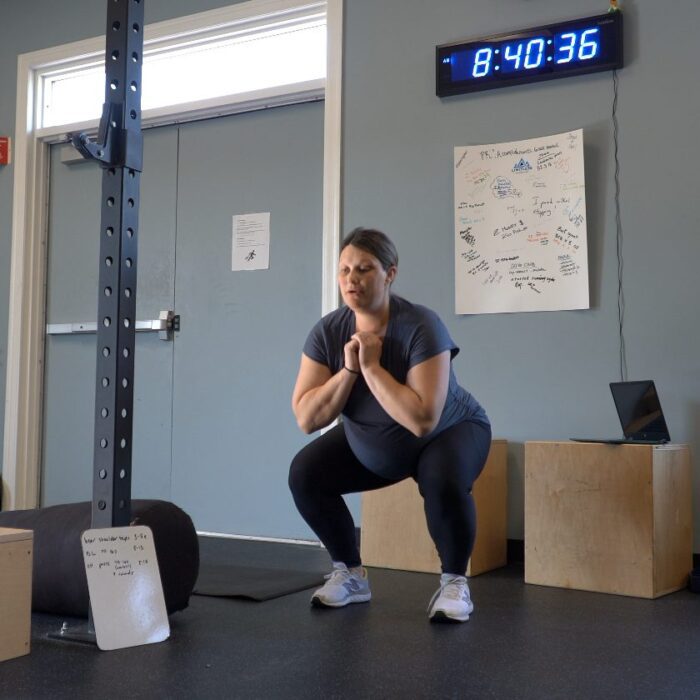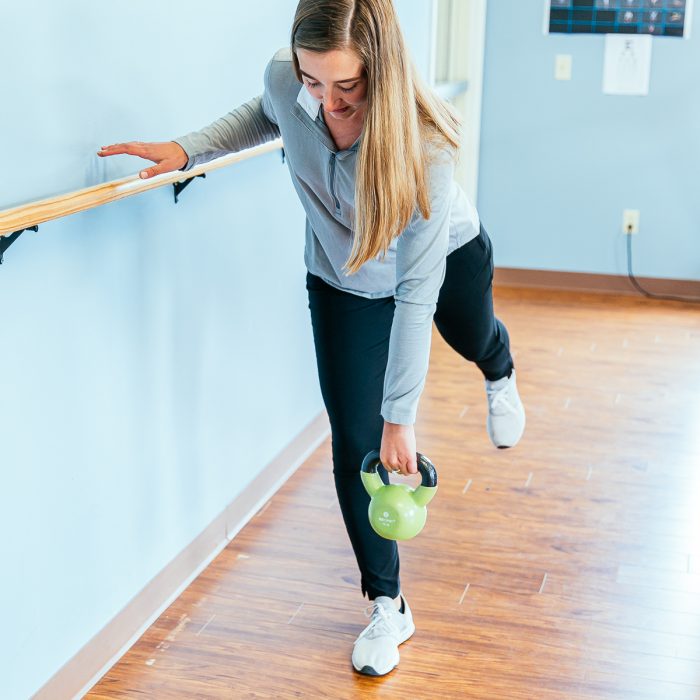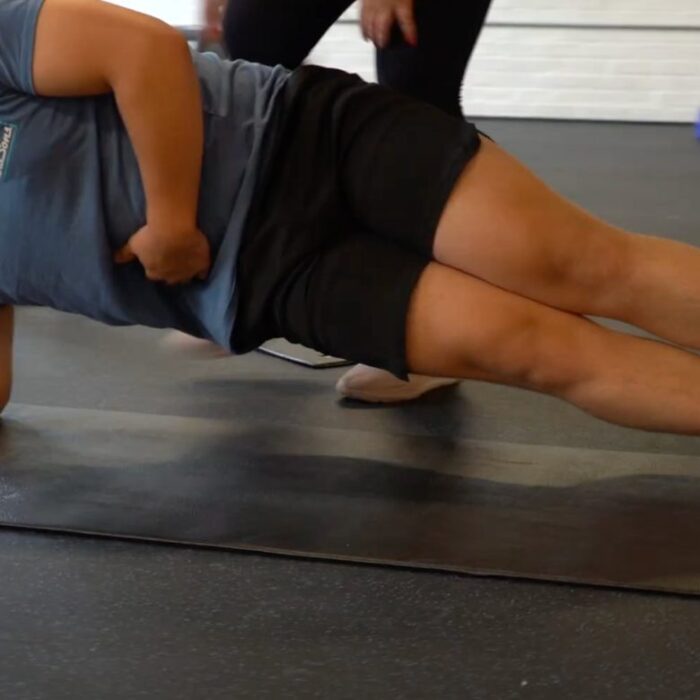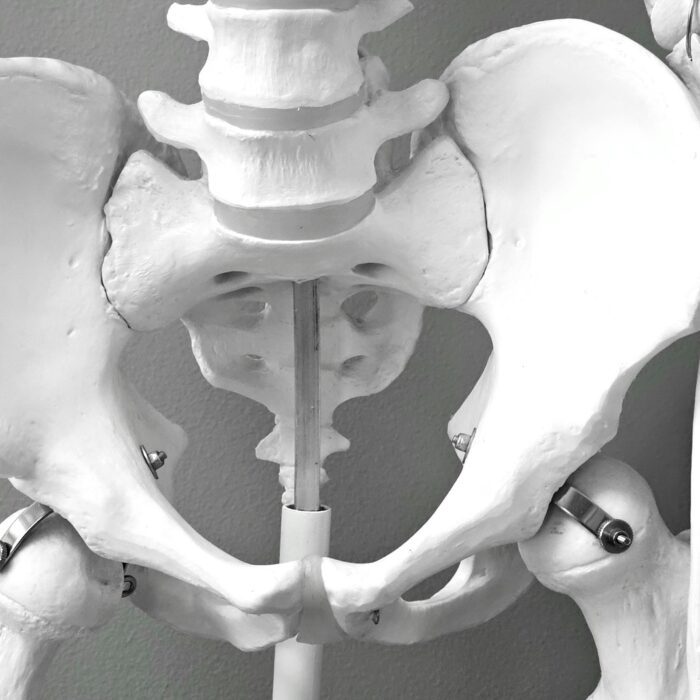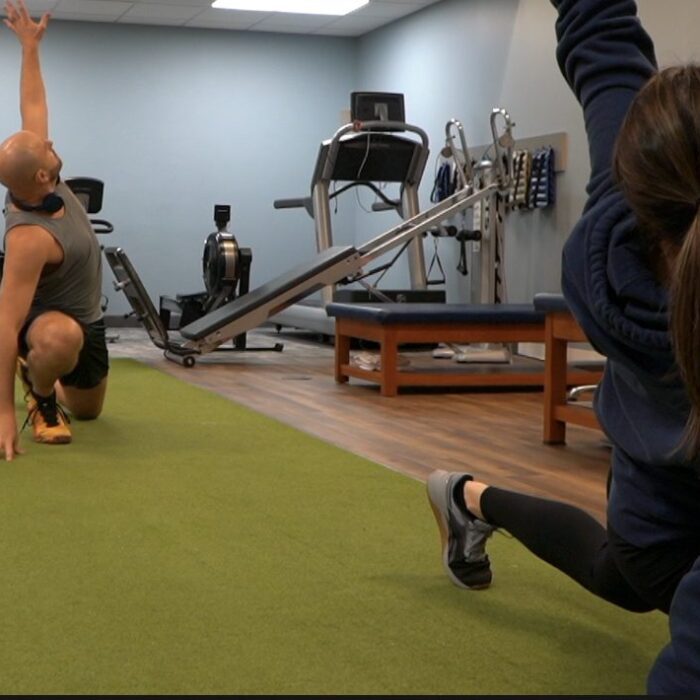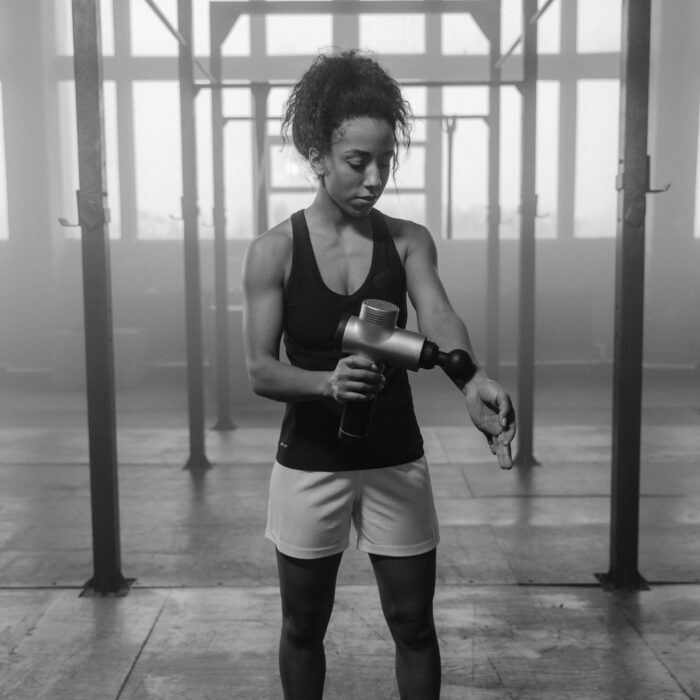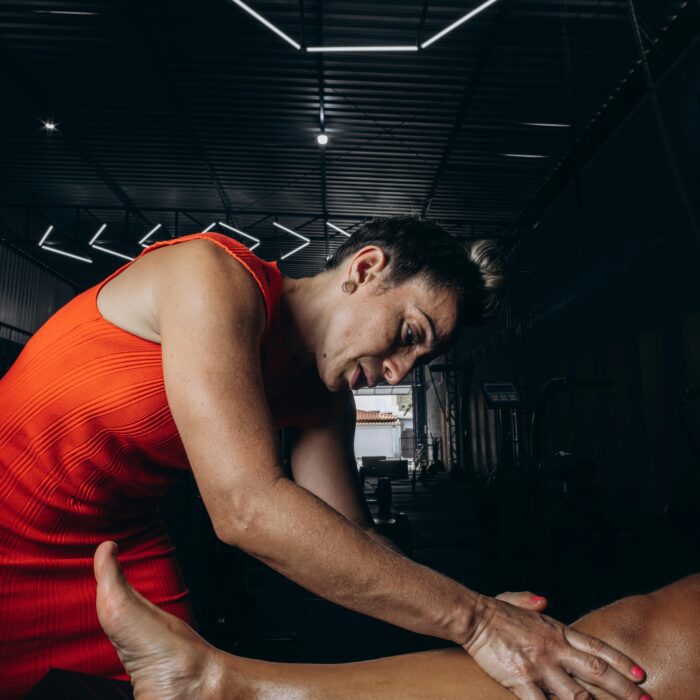Returning to sport after injury requires more than feeling pain-free — it demands objective proof that your body and mind are ready for competition. Research shows athletes who resume play without meeting clear readiness criteria face re-injury rates as high as 70%. Return to Play (RTP) physical therapy bridges the gap between recovery and real-world performance, ensuring that “feeling better” is not mistaken for “being ready.”
What Is Return to Play Physical Therapy?
RTP physical therapy is the final and most performance-focused phase of rehabilitation. It prepares athletes for the unpredictable, high-force movements of competition by combining objective testing, functional analysis, and psychological readiness assessment.
Core components include:
- Objective performance testing – measuring strength, power, endurance, and agility against benchmarks or pre-injury baselines.
- Functional assessment – evaluating movement quality and control during sport-specific drills.
- Biomechanical analysis – identifying compensations that increase injury risk.
- Psychological evaluation – determining confidence, motivation, and fear of re-injury.
- Graduated exposure – safely progressing from controlled drills to full competition.
- Collaborative decision-making – integrating input from therapists, physicians, trainers, and the athlete.
The Bridge from Recovery to Competition
Recovery from injury isn’t linear. Many athletes are “recovered enough for daily life” long before they are truly prepared for sport. Competitive movements—like landing, cutting, sprinting, or throwing—can generate forces several times body weight, far exceeding those experienced in normal activity. RTP therapy exposes the body to these forces in controlled, progressive stages, ensuring tissues, coordination, and confidence adapt fully before competition.
Why “Feeling Better” Isn’t Enough
Symptoms resolve faster than true recovery. Studies show:
- Pain disappears before strength returns: Injured limbs may remain 10–20% weaker even when pain-free.
- Movement patterns stay altered: Compensations persist and can shift stress to other joints.
- Tissue healing continues: Collagen remodeling lasts months beyond pain resolution.
- Neuromuscular function lags: Reflexes and balance must be retrained.
- Confidence takes time: Fear and hesitation reduce performance and increase risk.
RTP therapy closes this gap through testing and targeted progression, turning subjective recovery into measurable readiness.
The Risks of Returning Too Soon
Premature return often leads to setbacks that can end seasons—or careers.
Common re-injury statistics:
- Hamstring strains: 30–50% recurrence within one year when rehab is incomplete.
- ACL reconstruction: 2–3× higher re-tear rates when returning before 9 months.
- Ankle sprains: 40–70% recurrence without proper progression.
- Shoulder dislocations: Over 80% recurrence in young athletes lacking neuromuscular retraining.
- Concussions: Returning before full recovery increases the risk of prolonged symptoms and serious complications.
Beyond physical re-injury, premature return can cause chronic instability, early arthritis, performance limitations, and lasting psychological fear. In many cases, rushing back doubles or triples total recovery time.
Return to Play Criteria: Evidence-Based Readiness
Safe return depends on measurable readiness across several domains.
Physical Readiness Markers
- Strength symmetry: ≥90% compared to uninjured side.
- Range of motion: Full, pain-free motion equal to the opposite limb.
- Hop testing: ≥90–95% limb symmetry on single-, triple-, crossover-, and timed hop tests.
- Power & explosiveness: Symmetry on vertical jump, sprint, and agility tests.
- Endurance: Ability to maintain mechanics under fatigue.
Psychological Readiness
- Fear of re-injury: Low scores on fear scales like ACL-RSI predict better outcomes.
- Self-efficacy: Confidence in ability to move, protect, and compete.
- Motivation: Internal drive rather than external pressure.
- Kinesiophobia management: Balanced caution without avoidance.
Sport-Specific Function
Testing must replicate real game demands:
- Movement quality under fatigue and complexity
- Technical skill performance (e.g., cutting, sprinting, throwing)
- Position-specific tasks (e.g., a lineman’s collisions vs. a midfielder’s endurance)
Comprehensive RTP Assessment
A full RTP evaluation typically includes:
- Medical review: Confirmation of healing and imaging results.
- Symptom and functional screening: Pain, swelling, instability.
- Physical exam: Range of motion, strength, balance.
- Performance testing: Strength, agility, and power metrics.
- Functional movement screening: Detecting asymmetries.
- Sport-specific drills: Progressive intensity tests.
- Psychological evaluation: Confidence and readiness assessment.
- Collaborative discussion: Aligning athlete, clinician, and coach.
This assessment produces objective data to support clearance decisions, usually lasting 60–90 minutes.
Objective Testing Methods
Validated testing replaces guesswork with data:
- Isokinetic testing: Computerized strength comparisons.
- Force plate analysis: Measuring ground reaction forces and asymmetries.
- Video motion analysis: Frame-by-frame biomechanical review.
- Wearable tech: Tracking workload and symmetry in live conditions.
- Standardized test batteries: Allowing comparison to norms and tracking progress.
Making the Return-to-Play Decision
Clearance is a balance of science, risk tolerance, and athlete goals. Clinicians apply frameworks such as StARRT (Strategic Assessment of Risk and Risk Tolerance) to weigh medical findings, competition timing, and psychological readiness.
Typical minimum criteria include:
- ACL reconstruction: ≥9 months, 90% limb strength/hop symmetry, psychological score ≥75%.
- Ankle sprain: Full ROM, hop symmetry ≥90%, stable single-leg balance >30s.
- Hamstring strain: 90% strength, pain-free sprinting, passed Nordic test.
Decisions are made collaboratively by therapists, physicians, trainers, and the athlete.
Return to Play Timelines for Common Injuries
ACL Reconstruction
- Timeline: 9–12 months minimum
- Progression:
- 0–3 months: ROM & gait normalization
- 3–6 months: Strength & neuromuscular training
- 6–9 months: Plyometrics and agility
- 9–12 months: Sport-specific drills and clearance testing
- Clearance: ≥90% symmetry across strength and hop tests, psychological score ≥75%, imaging confirmation.
Concussion
- Six-Stage Progression (24 hrs minimum per stage):
- Rest (24–48 hrs)
- Light aerobic activity
- Sport-specific exercise
- Non-contact training
- Full contact practice (with clearance)
- Competition
- Rules: No same-day return, regress if symptoms reappear.
Ankle Sprain
- Timeline: 4–12 weeks depending on grade
- Progression: From walking pain-free to sprinting, cutting, and full practice.
- Clearance: Equal ROM, pain-free sport drills, >30s balance, 90% hop symmetry.
Contact Level and Sport Type Considerations
Non-Contact Sports (running, swimming, cycling):
Progression focuses on biomechanics, endurance, and gradual workload increases.
Limited-Contact Sports (soccer, basketball, baseball):
Readiness includes reactive control, protective awareness, and confidence under unpredictable conditions.
Full-Contact Sports (football, hockey, rugby):
Requires complete tissue healing, psychological readiness for contact, and often staged participation—practice before full games.
Team athletes may face added external pressure (playoffs, roster spots), making objective, data-based clearance especially important.
The Psychological Component
Fear of re-injury is one of the strongest predictors of poor return outcomes. Common manifestations include hesitation, reduced aggressiveness, and distrust of the injured limb.
Effective management includes:
- Education: Understanding true tissue readiness.
- Graded exposure: Practicing feared movements progressively.
- Objective proof: Seeing measurable test results builds trust.
- Psychological skills training: Visualization, positive self-talk, mindfulness.
- Gradual reintroduction: Controlled exposure during practice before full competition.
Confidence grows through testing milestones and measurable progress rather than reassurance alone.
Gradual Return Progression
A staged RTP process allows adaptation and confidence to rebuild safely:
- Individual training: Controlled environment, focus on technique.
- Small group drills: Add reaction and moderate unpredictability.
- Modified team practice: Limited participation, no contact.
- Full practice: Unrestricted training.
- Limited competition: Restricted minutes or positions.
- Full competition: Unrestricted play with monitoring.
Each stage typically lasts 1–7 days depending on tolerance. Setbacks require stepping back a stage.
Collaborative Roles in Return to Play
- Physical Therapist: Leads testing, provides data and recommendations.
- Physician: Reviews healing and grants medical clearance.
- Athletic Trainer: Monitors daily response and implements modifications.
- Coach: Integrates progression into practice and competition.
- Athlete: Communicates symptoms, follows guidance, and gives honest feedback.
Clear communication prevents premature return and builds shared accountability.
Limitless PT’s Evidence-Based RTP Approach
At Limitless Physical Therapy, our goal is not just clearance—it’s confidence. We use validated, objective methods across our Rochester-area locations to determine readiness and guide a safe return.
Our process includes:
- Comprehensive multi-domain assessment
- Sport- and position-specific progression
- Collaboration with physicians, trainers, and coaches
- Graduated intensity re-entry
- Ongoing prevention and monitoring support
Locations:
- Victor: 6534 Anthony Dr, Suite C — Comprehensive RTP protocols
- Brighton: 2561 Lac DeVille Blvd, Suite 100 — Functional and clearance specialists
- Greece: 91 Erie Canal Dr, Suite E — Balance and post-concussion care
- Cortland: 165 Main St, Suite 5A — County-wide RTP services
Most insurance plans, including Medicare, Medicaid, and Workers’ Comp, are accepted.
Starting Your Return to Play Journey
Consider an RTP assessment if:
- You’re nearing rehab completion and unsure about readiness
- Your doctor has cleared you, but confidence lags
- You’ve experienced re-injury from rushing back
- Your sport involves high contact or explosive movement
- You need formal clearance or documentation
- You want measurable benchmarks for progress
What to expect: a 60–90-minute evaluation covering physical, functional, and psychological testing, followed by a clear readiness report or plan to close any remaining gaps.
Know When You’re Ready
The difference between feeling ready and being ready determines whether your comeback builds momentum or sets you back again.
RTP physical therapy provides the objective testing and structured progression that protect your body, confidence, and future performance.
Athletes who follow evidence-based RTP criteria show dramatically lower re-injury rates, longer careers, and higher performance levels than those who rush recovery.
At Limitless Physical Therapy, our mission is to help you return to competition safely—and stronger than before.
Contact any of our Rochester-area clinics or visit limitlesspts.com to schedule your Return to Play assessment.
Return prepared. Compete confidently. Live without limits.

